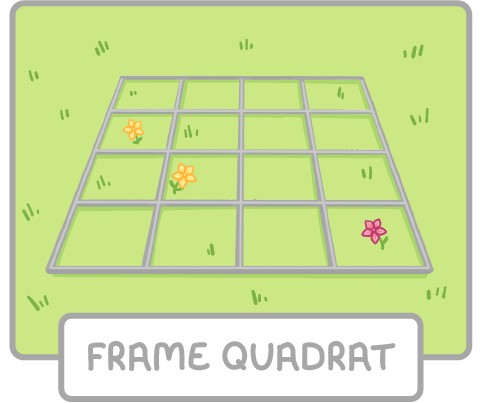Random Sampling
This lesson covers:
- Key biodiversity terminology and the different levels of biodiversity
- Sampling techniques for plants and animals
- How to prevent sampling bias and reduce the effects of chance
Defining biodiversity
Biodiversity refers to the variety of organisms in an area.
Levels of biodiversity:
- Habitat diversity - The number of habitats.
- Species diversity - The number of species and the number of individuals in each species.
- Genetic diversity - The variation in alleles within a population of a species.
High genetic biodiversity allows for better adaptation to a changing environment and resistance to disease.
Key terms related to biodiversity:
- Species - A group of organisms that can interbreed to produce fertile offspring.
- Habitat - The place where a species lives within an ecosystem.
- Community - The living organisms of all species found in a particular ecosystem at a particular time.
- Ecosystem - A relatively self-contained, interacting community of organisms and their environment.
- Niche - The role of an organism in an ecosystem, including its interactions and its method of obtaining energy.
Sampling techniques
There are two main techniques you need to know about for sampling plants and animals.

These techniques are:
- Pooter - This samples small insects by sucking air containing the insects into a plastic container via a tube.
- Quadrat - This is a frame used to sample plants or non-motile animals in an area.
Sampling biodiversity
Depending on the area and organisms being investigated, we can use the methods above to sample biodiversity of an area.
This can be done as follows:
- Choose area to sample.
- Choose an appropriate method (e.g. quadrats, pooters, etc.) depending on the habitat.
- Estimate the number of individuals of each species.
- Repeat sampling across habitat and take multiple samples for reliability.
- Estimate total number of individuals or species in the area.
Estimating the total number of individuals of a species
There are a few methods that can be used to estimate the total number of individuals of a species using quadrats.
- Species frequency
- Record the number of times a species is found in a quadrat.
- Record the number of samples taken in total.
- Calculate:
species frequency = number of samplesnumber of times a species is found in a quadrat×100
- Density
- Count the number of individuals of a species in a 1 m2 quadrat.
- Average this value across multiple quadrats.
- Multiply this average by the number of quadrats that would fit in the area.
- Percentage cover
- Estimate the area within a quadrat that a plant species covers.
- Average this value across multiple quadrats.
- Multiply this average by the number of quadrats that would fit in the area.
How to prevent sampling bias and reduce the effects of chance
Random sampling is important to ensure the samples are representative of the whole area.
The best way to prevent sampling bias is to:
- Eliminate any human involvement in choosing the samples by carrying out random sampling.
- Take measurements of individuals selected randomly from the population of organisms being investigated.
We can minimise the effect of chance in random sampling by:
- Using a large sample size.
- Analysing the data collected.